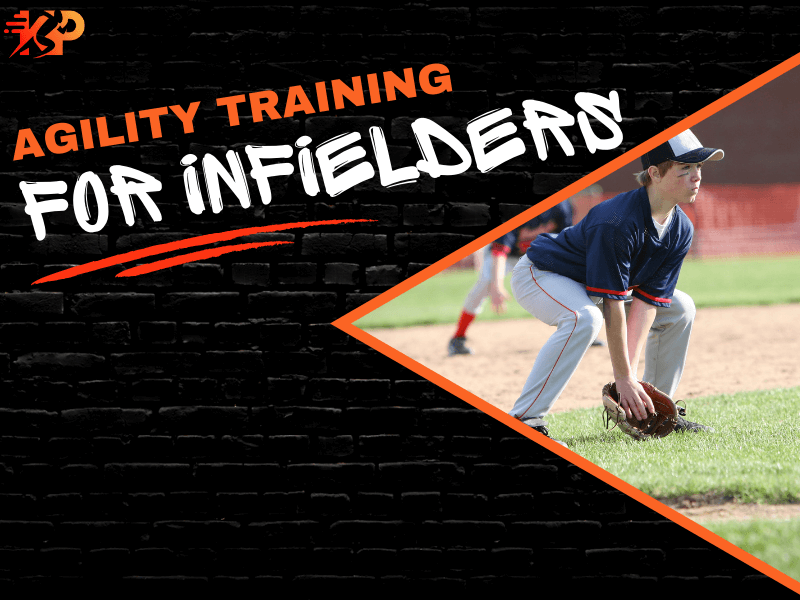What does Foam Rolling do?
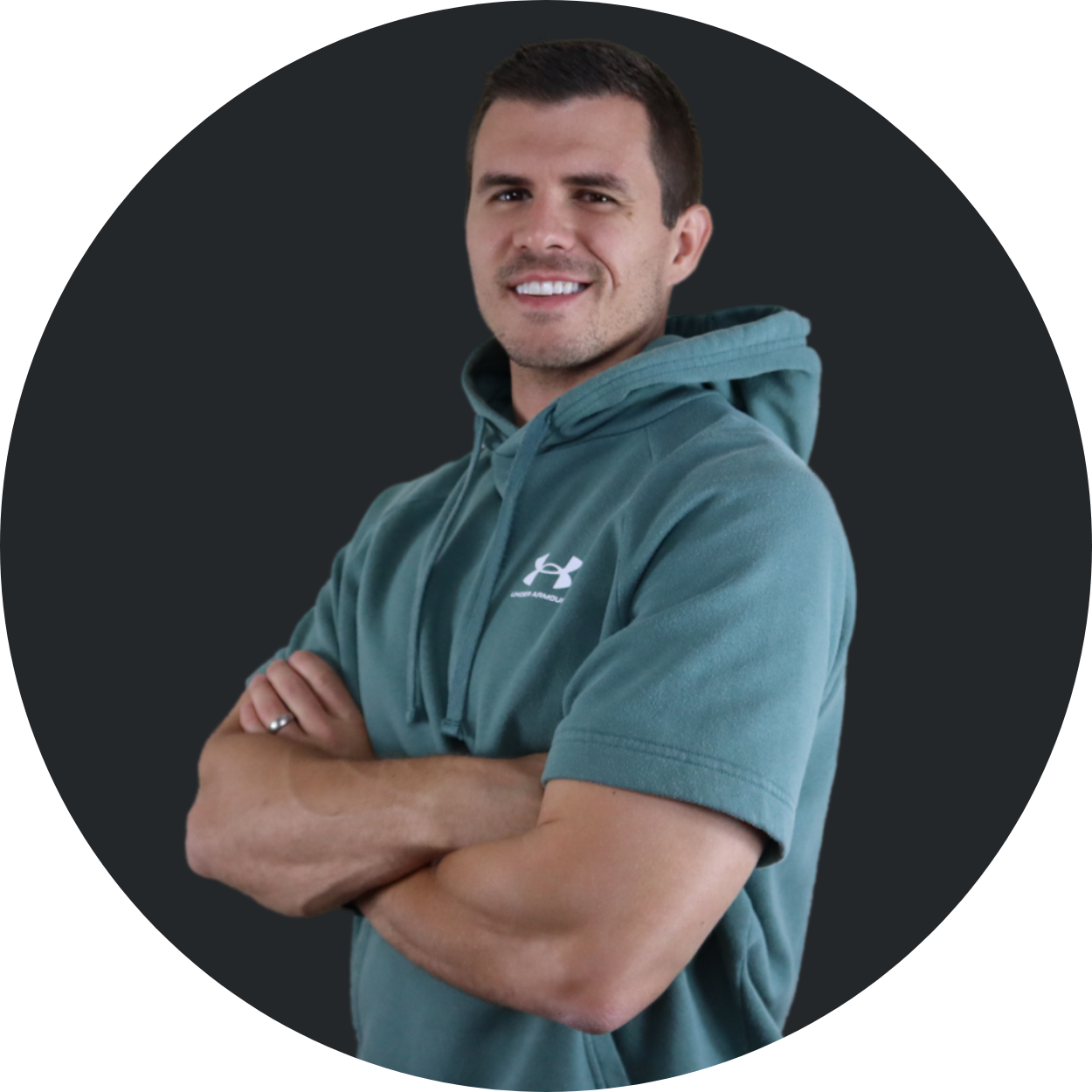
By Mark Keil, CSCS
Posted on May 20, 2024

By Mark Keil, CSCS
Posted on May 20, 2024
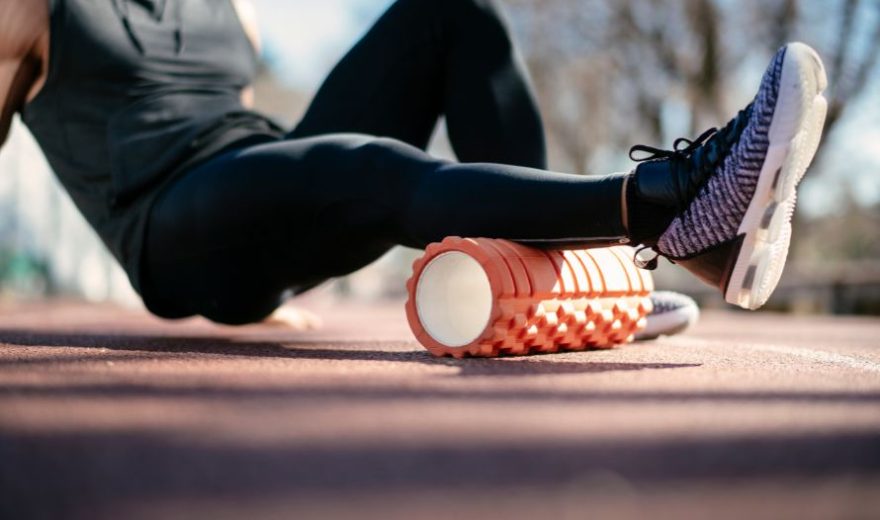
Have you ever thought to yourself, ‘What’s the purpose of Foam Rolling?’, or, ‘Does Foam Rolling even do anything?’.
Most of us have thought that at least once. And you’re probably wondering if it’s worth your athlete’s time.
Well, here’s a little insight into what Foam Rolling is and what this type of stretching actually does to the muscle.
Foam Rolling is a type of stretching called Self-Myofascial Release (SMR).
What does Foam Rolling do?
While there there is still much left to be learned about the benefits of Foam Rolling, here is what we do know:
- Reduces soreness: Foam Rolling can reduce soreness following exercise (specifically, Delayed Onset Muscle Soreness (DOMS)).
- Increases Joint Range of Motion: Foam Rolling breaks up and releases Fascial Adhesions (thereby increasing Joint Range of Motion (ROM)).
- Primes the muscles: Foam Rolling helps ‘warm up’ the muscle making it a great precursor to physical activity (workouts, practices, games, etc.).
How long should my athlete spend Foam Rolling?
Typically, I’ll have athletes Foam Roll for 5-10 minutes before we move into a Dynamic and / or Static Stretching routine. This helps the athlete warm their muscles prior to the other styles of stretching that continue the muscle-lengthening process.
How does a Foam Rolling program look?
For older athletes (collegiate & professional athletes), I’ll usually just say, ‘Roll out what you need’. By that point, they know what to do and what they actually need. However, for athletes in High School and younger, I’ll take them through the following routine.
Note: In the examples below, I isolate a single muscle group by crossing one leg over the other. If your athlete has never used a Foam Roller, or, if they complain about their muscles being tight, then you may wait to have them stack their legs, as this creates a more targeted and deeper massage. For example, if they are rolling out their calves, they can decrease the intensity of the stretch by placing both calves on the Foam Roller at the same time. This will distribute the weight across both legs, reducing the pressure on the muscles and therefore alleviating some of the discomfort that can be caused when Foam Rolling tight muscles.
Also- in this article we will discuss Foam Rolling the lower body. However, you can (and many do) Foam Roll the upper body (back, posterior shoulders, etc.) as well.

Image is property of SportStrength and used with permission.
Foam Roll – Calves
Instructions: Have your athlete roll out their calves by crossing one leg over the other. They will then raise their hips from the ground by pushing off their hands. Their weight will now be distributed between their hands and the calf on the Foam Roller. Using their hands, they will move themselves back and forth on the Foam Roller to roll out the length of their calf.
Duration: They should continue this motion for :10-:15 seconds before switching legs. Complete 1x.
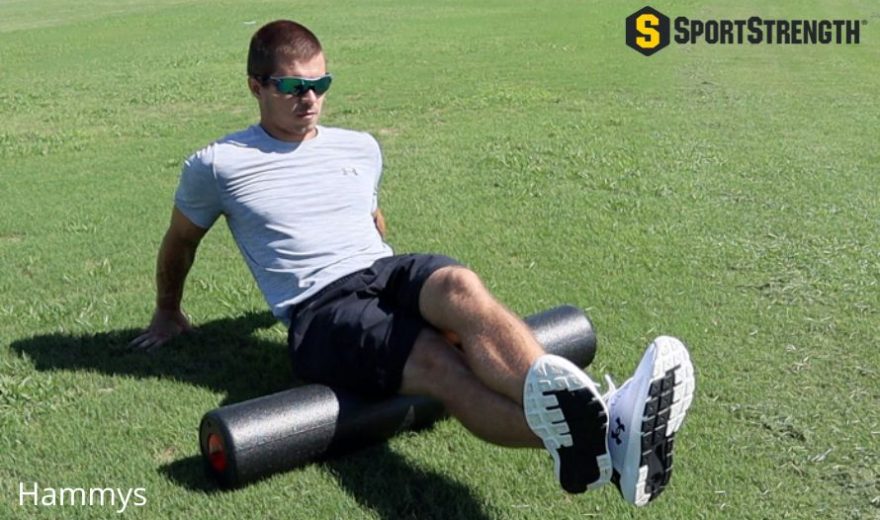
Image is property of SportStrength and used with permission.
Foam Roll – Hammys
Instructions: Once they’ve rolled out their calves, they can move the Foam Roller up to their Hammys. They will stack one leg over the other to isolate the Hammys of one leg. They will repeat the same motion they performed to roll out their calves- with their weight balanced between their hands and the Hammys (resting against the Foam Roller), they will push themselves back and forth across the roller.
Duration: They should continue this motion for :10-:15 seconds before switching legs. Complete 1x.
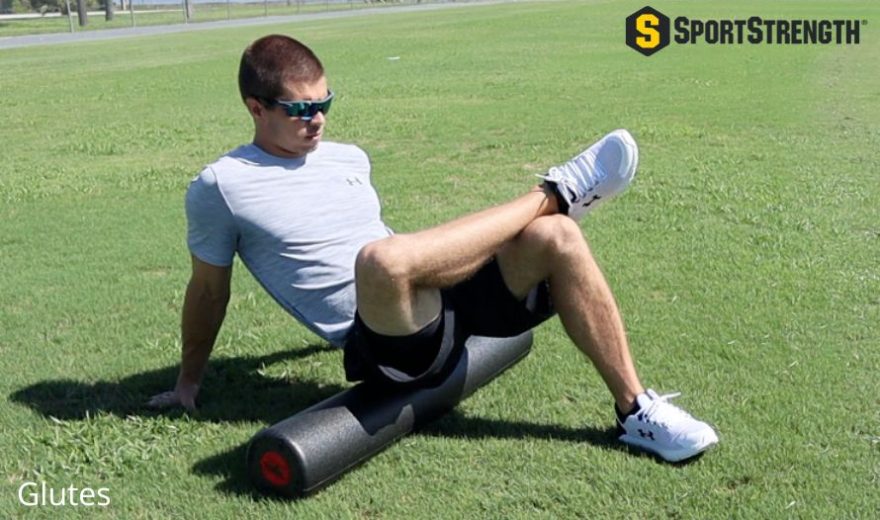
Image is property of SportStrength and used with permission.
Foam Roll – Glutes
Instructions: After rolling out the Hammys, your athlete will move the Foam Roller to their Glutes. They will then cross one leg over the other. You can see in this image that I have my right leg crossed over my left. I am therefore rolling out the right Glute. For this movement, your athlete can lean (slightly) toward the right or left as they move back and forth on the Foam Roller.
Duration: They should continue this motion for :10-:15 seconds before switching legs. Complete 1x.
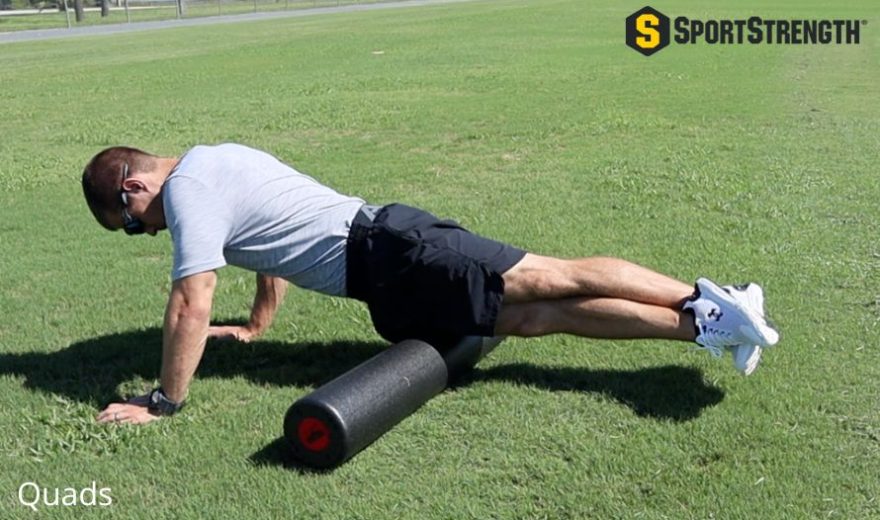
Image is property of SportStrength and used with permission.
Foam Roll – Quads
Instructions: Once they have rolled out their Glutes, they will move to the last muscle group – the Quads. To perform this movement, have your athlete stack their legs. They will then move themselves over the Foam Roller by pushing off their hands. Your athlete can also lean over (to the side) slightly (as I am in this image) to focus on the lateral side of the Quads.
Duration: They should continue this motion for :10-:15 seconds before switching legs. Complete 1x.
How often should my athlete Foam Roll?
Foam Rolling is a great method of stretching that can be utilized often. At the very least, I would recommend your athlete Foam Roll before and after strength training sessions. This will aid in their recovery and allow your athlete to better maintain joint range of motion as they increase their muscular size and strength.
Conclusion
In summary – Foam Rolling is a great way for your athlete to prepare for training, practices, and games. Further, it is a method of stretching that facilitates your athlete’s muscular recovery and increases joint ROM.
If you’re reading this article because you’re looking for tips that will help your athlete increase their speed in sport, then I encourage you to sign up to try my Speed and Agility Program (there’s no cost to try out the program!).
We are one of the top Speed and Agility Training Programs in Tulsa, Oklahoma and train athletes every week. Keil Performance operates out of World Baseball Outreach, which is located at 61st and Mingo.
Training Resources


